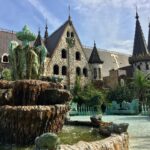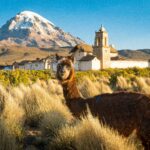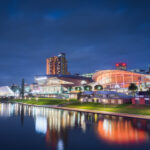Teach English in Colombia
Teaching English in Colombia is a rewarding and enriching experience. Colombia’s cultural diversity, breathtaking landscapes, and warm, welcoming people provide an exciting backdrop for ESL teachers. The demand for English language skills is on the rise, making it a prime destination for English teachers. Whether you choose to work in a bustling urban center like Bogota or a picturesque town nestled in the Andes, you’ll find a diverse range of opportunities in both public and private institutions. Colombian students are enthusiastic and eager to learn, which makes the teaching experience truly gratifying. Additionally, as an English teacher in Colombia, you’ll have the chance to explore the country’s rich history, vibrant music, and delicious cuisine while immersing yourself in the Spanish language and forging lasting connections with your students and colleagues.
Popular Cities

Monserrate Mountain, Bogota
Bogota
The capital and largest city of Colombia, Bogota, is a thriving hub for English education. It boasts a high demand for English teachers, numerous language schools, international schools, and business opportunities. The city’s cosmopolitan atmosphere, cultural attractions, and excellent infrastructure make it a popular choice for English educators.
La Candelaria: Explore the historic heart of Bogota in the La Candelaria neighborhood. This charming district is known for its well-preserved colonial architecture, narrow cobblestone streets, and colorful buildings. Visit significant landmarks like the impressive Bolivar Square, the stunning gold exhibits at the Museo del Oro (Gold Museum), and the colonial-era churches. Don’t miss the Botero Museum, which showcases the works of renowned Colombian artist Fernando Botero. Enjoy the lively atmosphere, street art, and numerous cafes and restaurants that make La Candelaria a delightful place to wander.
Monserrate: For a breathtaking panoramic view of Bogota, take a trip to Monserrate. This iconic mountain stands over the city and is accessible by cable car, funicular railway, or a scenic hike for the more adventurous. At the summit, you’ll find a white church, a symbol of the city, and several restaurants. It’s an ideal spot to admire the cityscape, especially at sunset or under the night’s twinkling lights. The surrounding natural beauty and the sense of serenity up top provide a welcome escape from the urban hustle and bustle.
Usaquen: This trendy and picturesque neighborhood offers a unique blend of colonial charm and modern living. Stroll through its quaint streets lined with artisan shops, galleries, and boutique stores. The main square, Usaquen Park, is known for its Sunday flea market where you can find handcrafted jewelry, clothing, and local food. Enjoy a leisurely brunch at one of the many cozy cafes and explore the neighborhood’s cultural events, which often include live music and art exhibitions.
Medellin
Known as the “City of Eternal Spring” for its pleasant climate, Medellin has a burgeoning demand for English language skills. The city has a growing expatriate community and various language institutes and schools. It offers a unique blend of urban modernity and natural beauty, making it an attractive place for English teachers to live and work.
Comuna 13: This neighborhood was once one of the most dangerous areas in Medellin but has undergone a remarkable transformation. Today, Comuna 13 is a vibrant and colorful neighborhood with captivating street art and a lively atmosphere. Take a guided tour to learn about the neighborhood’s history, the impact of social projects, and the inspiring story of its turnaround. Don’t miss the outdoor escalators, which are a symbol of progress and accessibility for the community.
Metrocable and Parque Arvi: Experience the unique public transportation system in Medellin by taking a ride on the Metrocable. This cable car network not only eases transportation in the city but also offers breathtaking views of the city and the surrounding mountains. You can combine this with a visit to Parque Arvi, a lush natural park accessible by cable car. Enjoy hiking, horseback riding, and exploring the beautiful flora and fauna of the region. It’s a peaceful escape from the urban hustle and a great way to connect with nature.
Plaza Botero and Museo de Antioquia: Plaza Botero is a public square in the heart of Medellín adorned with 23 bronze sculptures by Colombia’s most famous artist, Fernando Botero. The exaggerated and voluminous figures are a hallmark of his style. Just steps away, you’ll find the Museo de Antioquia, which houses an extensive collection of Botero’s work as well as other Colombian and international art. It’s a fantastic opportunity to explore Colombia’s art scene and gain insight into the country’s history and culture.
Guatape: Close to Medellin is a picturesque and vibrant town located in the Antioquia region of Colombia, renowned for its stunning landscapes and the iconic El Peñol rock. The town is characterized by its charming streets adorned with vibrant, hand-painted frescoes, known as zocalos, that tell the story of the local culture and history. Visitors to Guatape can climb the 740 steps to the top of El Peñol for breathtaking panoramic views of the surrounding lakes and islands, making it a must-see destination for nature lovers and adventure enthusiasts.

Beach Hut Island, Cartagena
Cartegena
Cartagena, a coastal gem on Colombia’s Caribbean coast, is a city steeped in history, culture, and natural beauty. Its well-preserved colonial architecture, enclosed within imposing city walls, transports visitors to a bygone era. Strolling through the charming streets of the walled city, you’ll discover vibrant plazas, horse-drawn carriages, and colorful facades adorned with bougainvillea.
Explore the Walled City: Wander through the well-preserved colonial streets of the historic walled city, known as the “Old Town” (Ciudad Amurallada). Admire the stunning architecture, including the Plaza de Santo Domingo, the colorful houses with their flower-covered balconies, and the various shops, restaurants, and art galleries that add to the city’s enchanting ambiance.
Visit Castillo San Felipe de Barajas: Discover the imposing fortress of Castillo San Felipe de Barajas, a UNESCO World Heritage Site. Explore its underground tunnels, climb to its elevated viewpoints, and learn about its history as a vital defensive structure. The panoramic views of the city from the top are breathtaking.
Relax on the Beach: Take a day trip to Playa Blanca on Barú Island or Bocagrande Beach for some sun, sand, and sea. These coastal spots offer opportunities for swimming, water sports, and unwinding in the tropical climate. The crystal-clear waters and beautiful beaches are perfect for a relaxing beach day while visiting Cartagena.
While these three cities are often top choices, other urban centers like Cali, Barranquilla, Manizales and Pereira also offer English teaching opportunities, each with its own distinctive charm and advantages. The choice of city may depend on personal preferences, job opportunities, and the specific cultural experiences you seek while you teach English in Colombia.

Table with traditional Colombian food: Arepas, Empanadas, Platano with cheese.
Food
Arepas: Arepas are one of Colombia’s most beloved and versatile foods. These round, flatbreads are made from cornmeal and can be grilled, baked, or fried. They are often served with cheese, butter, or various fillings, making them a staple for breakfast or as a snack.
Empanadas: Empanadas are a widely enjoyed snack in Colombia. These are stuffed pastries made from corn or wheat dough and filled with ingredients like ground meat, cheese, or potatoes. They are usually deep-fried until crispy and golden brown.
Bandeja Paisa: This hearty dish hails from the Paisa region and is a true Colombian comfort food. A Bandeja Paisa typically includes grilled or fried pork, chorizo (sausage), rice, beans, a fried egg, ripe plantains, and an arepa. It’s a substantial and flavorful meal that showcases Colombian culinary traditions.
Sancocho: Sancocho is a traditional Colombian soup known for its rich and comforting flavors. It consists of a variety of ingredients like chicken, beef, or fish, along with potatoes, yuca (cassava), plantains, corn, and various herbs. It’s often served with a side of rice and avocado.
Ceviche: Ceviche is a beloved seafood dish with a refreshing twist in Colombia. Hailing from the country’s coastal regions, Colombian ceviche typically features fresh raw seafood, often fish or prawn marinated in zesty citrus juices, usually lime or lemon.
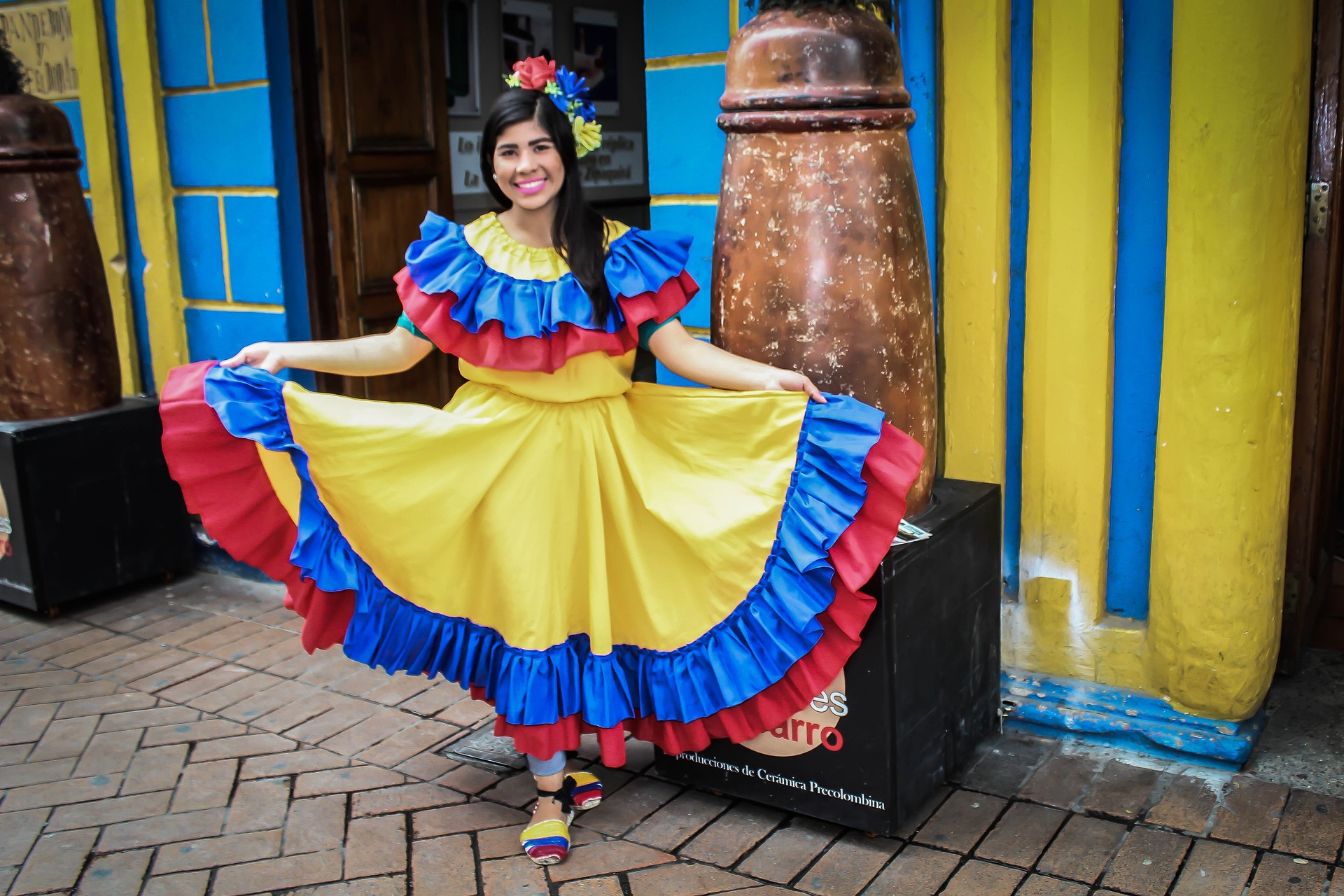
Traditional Colombian dress
Culture
Warm and Hospitable People: The Colombian people are known for their warm and friendly nature. Colombians are often described as some of the most welcoming and hospitable individuals you can meet. They take pride in making visitors feel at home, offering a smile, and going out of their way to assist and share their culture. This genuine hospitality creates a sense of camaraderie that makes traveling in Colombia an enriching and memorable experience.
Diverse Regions: Colombia is known for its geographical diversity, from the Andes mountains to the Amazon rainforest and the Caribbean and Pacific coasts. Each region has its own unique culture, traditions, and cuisine, creating a wonderfully varied and dynamic nation.
Music and Dance: Music and dance are at the heart of Colombian culture. Cumbia, Vallenato, Salsa, and Champeta are just a few of the many musical genres that have their roots in Colombia. Salsa dancing, in particular, is an integral part of life in cities like Cali, earning it the title of the “Salsa Capital of the World.”
Festivals: Colombia boasts an abundance of colorful and lively festivals throughout the year. The Carnival of Barranquilla, the Flower Festival in Medellin, and the Feria de Cali are just a few examples. These festivals are a vibrant expression of Colombian culture, featuring parades, music, dance, and elaborate costumes.
Cuisine: Colombian cuisine is as diverse as its landscape, with regional dishes that showcase a range of ingredients. Empanadas, arepas, bandeja paisa, ajiaco, and sancocho are some of the traditional dishes you must try. The use of ingredients like plantains, yuca, and aji pepper adds unique flavors to Colombian food.
Coffee Culture: Colombia is renowned for its high-quality coffee, and coffee culture is deeply ingrained in Colombian daily life. Visiting a coffee plantation (fincas) is a cultural experience that allows you to learn about the coffee production process, from cultivation to brewing, while enjoying some of the world’s best coffee.
Football/Soccer: Much like every South-American country, football holds a special place in Colombian culture, with passionate fans and a strong tradition of the sport. The country’s fervor for football is evident through the colorful fan culture, lively stadium atmospheres, and the success of Colombian players both domestically and internationally, contributing to a sense of national pride and unity.
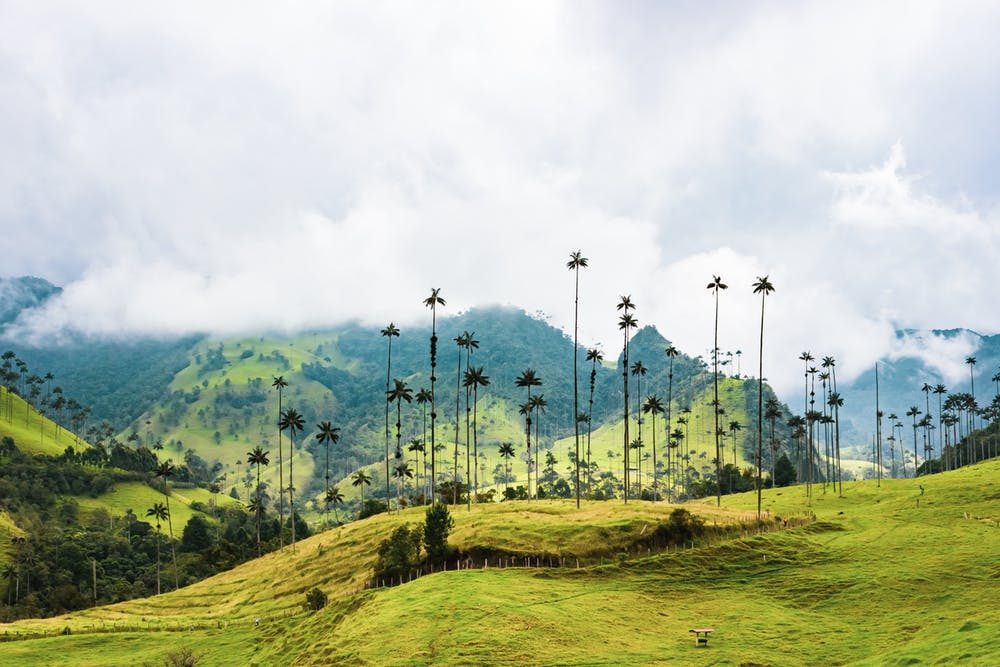
Cocora Valley—Tallest Palm Trees in the World.
Qualifications
An internationally recognised TESOL Certificate will be required to teach English in Colombia.
Visa
To work as an English teacher in Colombia, you will need to have a valid work visa. Most schools will help you obtain the correct visa and guide you through the process with visa assistance. Some students will originally enter on a 3-month holiday visa. The process of obtaining a work visa can vary depending on your country of origin, but generally, you will need to provide proof of your qualifications, a valid passport, and a criminal background check. It is important to check the specific requirements for each country and your language school for up-to-date advice.
Get Started Today!
Teaching English in Colombia offers a great opportunity for those seeking an enriching and culturally immersive experience. Firstly, Colombia’s increasing demand for English language proficiency creates a wealth of job opportunities in a diverse range of settings, from public schools to private institutions. Secondly, Colombian students are known for their enthusiasm and eagerness to learn, which makes teaching a rewarding endeavor. Additionally, Colombia’s stunning natural landscapes, vibrant cities, and lively culture provide a unique backdrop for adventure and exploration during your time off. Finally, teaching in Colombia allows you to immerse yourself in the Spanish language and develop lasting connections with local communities and fellow expats, offering a truly transformative experience that goes beyond the classroom.





















